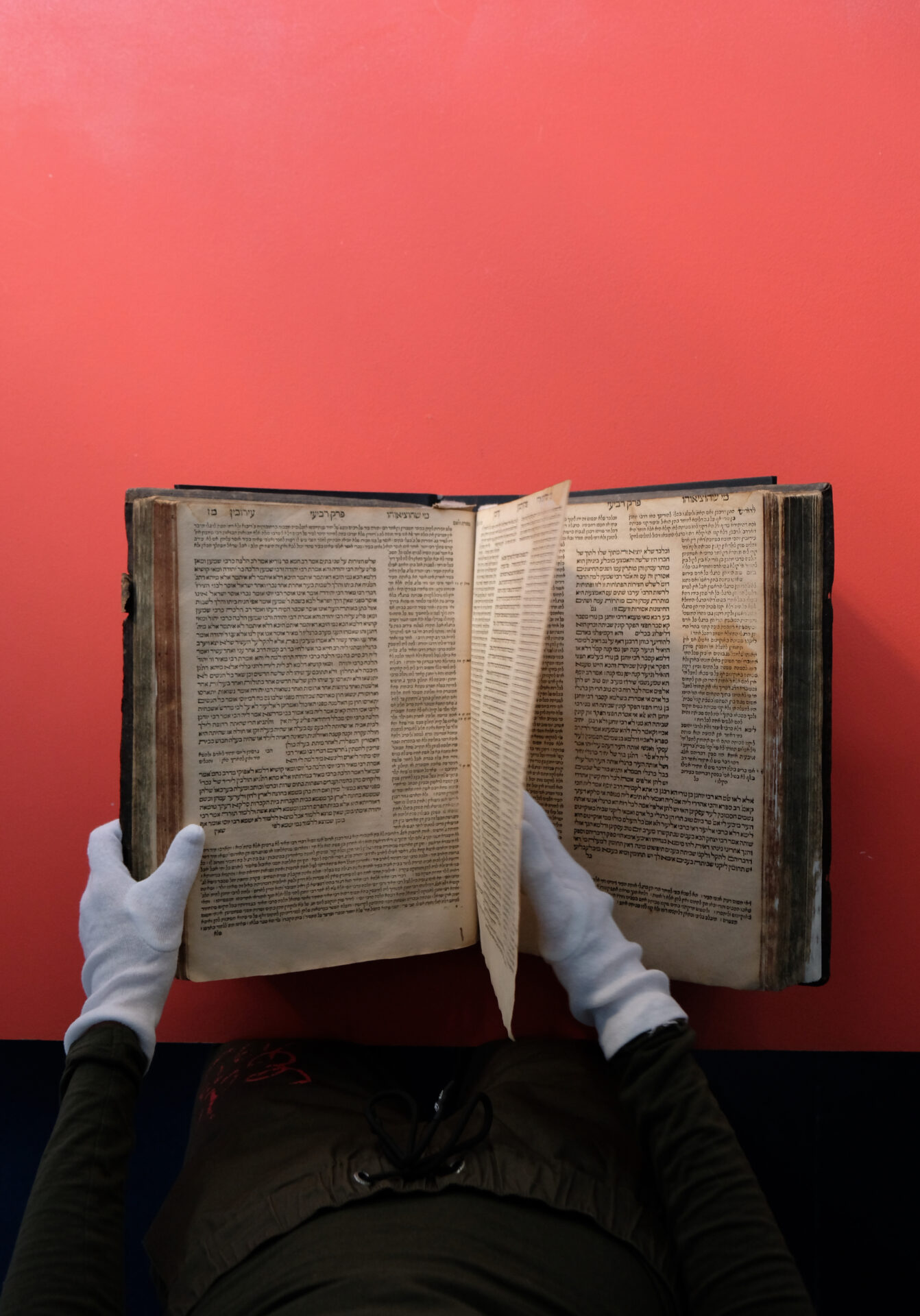«Provenance research is always an adventure!»
Six questions for Catrina Langenegger
Catrina Langenegger is a PhD student at the Center for Jewish Studies at the University of Basel. For the Jewish Museum of Switzerland, she researched a Talmud (1578–80/1522–28) from the printing houses Froben (in Basel) and Bomberg (in Venice). Barbara Häne spoke with her about her historical research, handwritten scribbles, and the value of old books.
Barbara Häne: Dear Catrina, you are an expert on the Basel Talmud. What sparked your interest?
Catrina Langenegger: As a student, I specialized in Jewish history and the history of Basel, both of which consider Hebrew and Yiddish book printing in the 16th century a key chapter. At the time, printing the Basel Talmud was an exceptionally ambitious project, and it piqued my interest early on. When I trained as a research librarian, I had the opportunity to work on the digitization of the Basel Talmud in the university library’s collection. As part of the «Buxtorf Estate,» the library has a rare, complete and impeccable edition of the Basel Talmud in its collection. Certain excerpts are similar to the one on display at the Jewish Museum.
BH: Our copy has passed through many hands. What were you able to find out?
CL: The paths that books of this age have taken before they end up in a library or museum collection are long, windy, and impressive. Traces reveal how prints were handled in the early modern period. The books were both objects of prestige and of everyday use. Those who could afford one, bought a few printed quires or even a whole volume unbound, and either bound the pages by hand or took them to a bookbinder for more or less elaborate binding. The Talmud volume in your collection is a good example of this: The edition is incomplete; the tractates come from different printing presses and times. Nevertheless, the individual tractates were collected and bound in a sensible order. My guess is that the former owners wanted to produce as complete an edition as possible with the available resources. By binding them, they protected the texts – but your copy shows that their protection came at a cost. In order to fit the pages into the book covers, the sheets were trimmed, and some of the texts were even lost. Your volume was repaired several times, which suggests that the owners invested in it. They wanted future generations to continue using it. In my opinion, this is an indication that they did not see the Talmud primarily as an object of value, but as a book to read.
BH: What was your biggest challenge?
CL: Provenance research is always exciting! In this case, I could use the digital version of the university library’s Talmud to compare the texts, which was an advantage, no question. Nevertheless, it is impossible to fully determine its many owners over the past four hundred years.
BH: Why was the Talmud printed in Basel in the 16th century?
CL: Basel was a center for book printing, especially for non-Latin writings. Froben’s printing house had previously found a market for beautiful Hebrew books. Importantly, the city was open to such projects, but luck also played its part, because the initiator, Simon zur Gemse, had previously tried to print the Talmud in other cities.
BH: How and where do you suppose this Talmud was used before the 20th century?
CL: Handwritten scribbles in the Talmud point to Sulzburg of the early 18th century. It’s possible that it was used in a Talmud school or by a learned family to study. After that, the traces fade.
BH: How would you estimate the value of this Talmud edition in terms of its cultural history?
CL: Any print this old is very valuable! And even more so Hebraica, since the largest number were fed to the flames as un-Christian writing. This book was studied for many centuries, before witnessing World War II. So in a word, high!
BH: Thank you very much for the interview, Catrina.
verfasst am 13.10.2022



